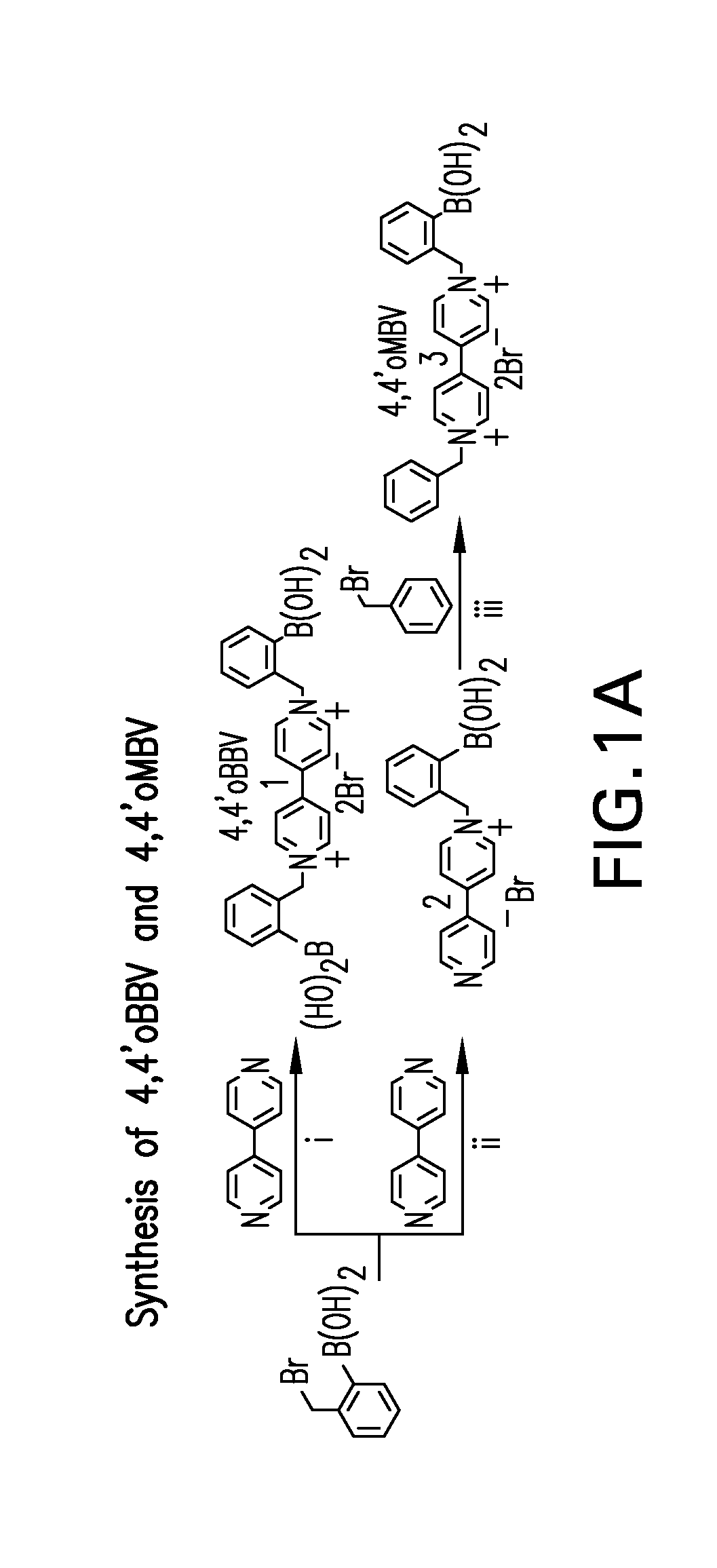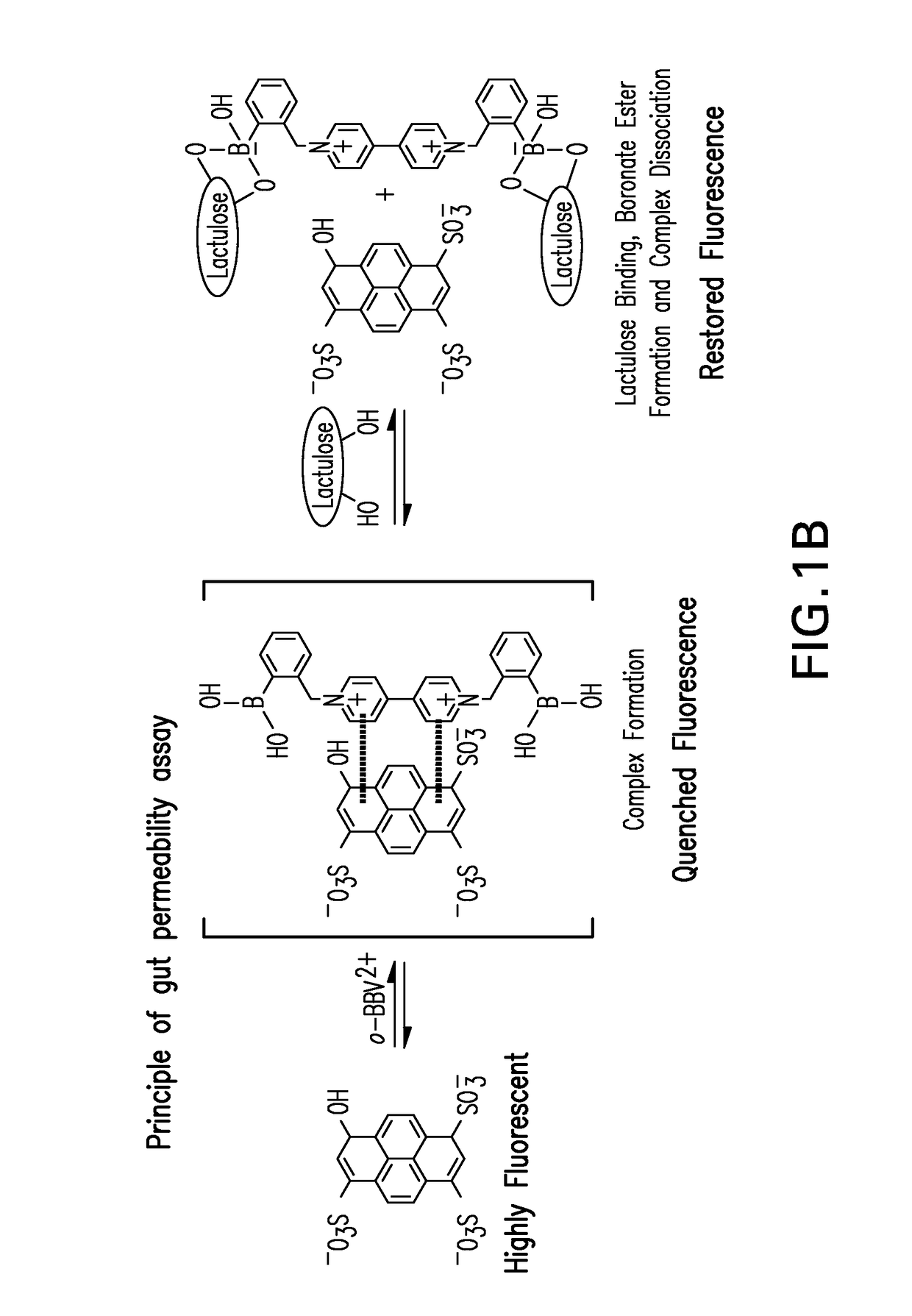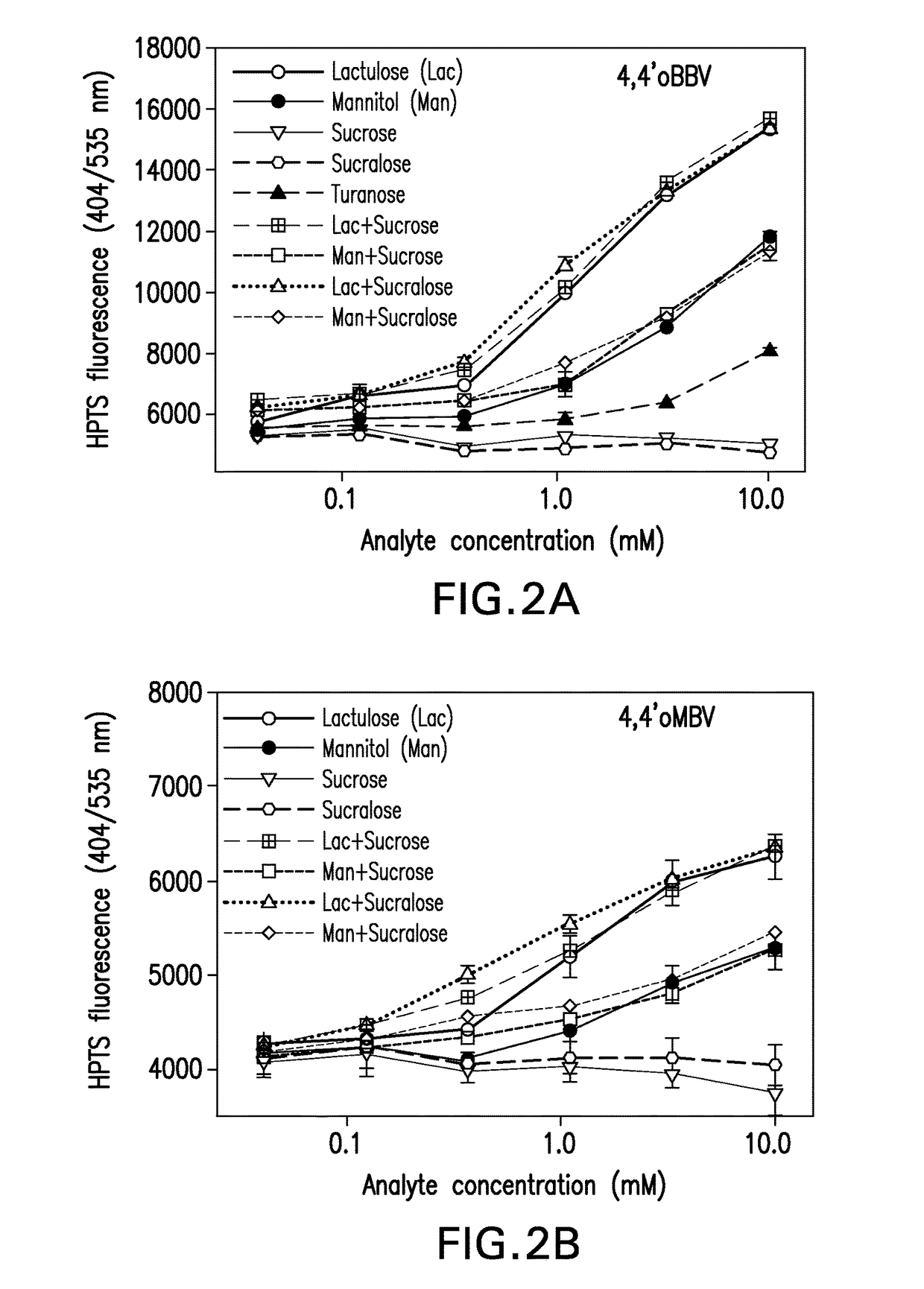Fluorescence assay for intestinal permeability
a fluorescence assay and permeability technology, applied in the field of intestinal permeability and methods of measurement, can solve the problems of malnutrition, malabsorption, failure to thrive, and both methods require considerable time and cos
- Summary
- Abstract
- Description
- Claims
- Application Information
AI Technical Summary
Benefits of technology
Problems solved by technology
Method used
Image
Examples
examples
[0054]Preparation of boronic acid viologens 4,4′oBBV and 4,4′oMBV: The reaction scheme with compound numbering are shown in FIG. 1(a). Synthesis of 4,4′oBBV was as described in Camara J. N. et al. Tetrahedron Letters 2002; 43:1139-1141. For 4,4′oMBV, 2-bromomethylphenyl boronic acid was reacted with excess 4,4′-bipyridyl in acetone to afford the mono-substituted 4,4′bipyridyl adduct (compound 2). Combining excess compound 2 with benzyl bromide in a solvent mixture of MeCN and MeOH yielded 4,4′oMBV (compound 3) after precipitation from the reaction mixture with acetone. Reagents and conditions were: (i) dimethylformamide, 55° C., 48 hrs, 90% (compound 1); (ii) acetone, 25° C., 2 hrs, 70% (compound 2); (iii) MeCN, MeOH, 55° C., 24 hrs, 86% (compound 3).
[0055]Molecular mechanism behind the organoboron based fluorescent lactulose assay: FIG. 1(b) illustrates a proposed molecular mechanism behind the organoborane based fluorescent lactulose assay. The sensing ensemble is comprised of an ...
PUM
| Property | Measurement | Unit |
|---|---|---|
| Time | aaaaa | aaaaa |
| Time | aaaaa | aaaaa |
| Time | aaaaa | aaaaa |
Abstract
Description
Claims
Application Information
 Login to View More
Login to View More - R&D
- Intellectual Property
- Life Sciences
- Materials
- Tech Scout
- Unparalleled Data Quality
- Higher Quality Content
- 60% Fewer Hallucinations
Browse by: Latest US Patents, China's latest patents, Technical Efficacy Thesaurus, Application Domain, Technology Topic, Popular Technical Reports.
© 2025 PatSnap. All rights reserved.Legal|Privacy policy|Modern Slavery Act Transparency Statement|Sitemap|About US| Contact US: help@patsnap.com



